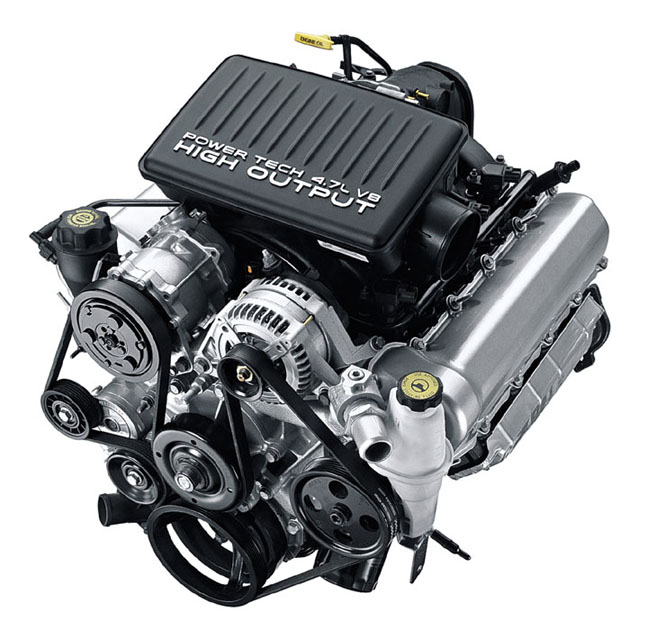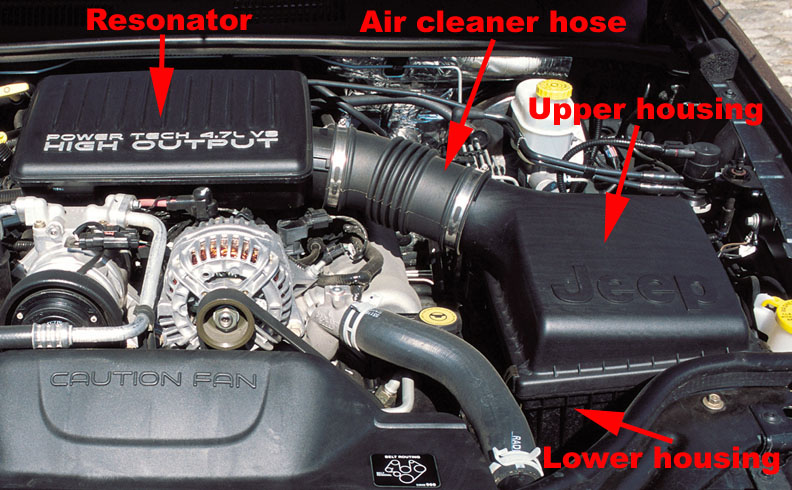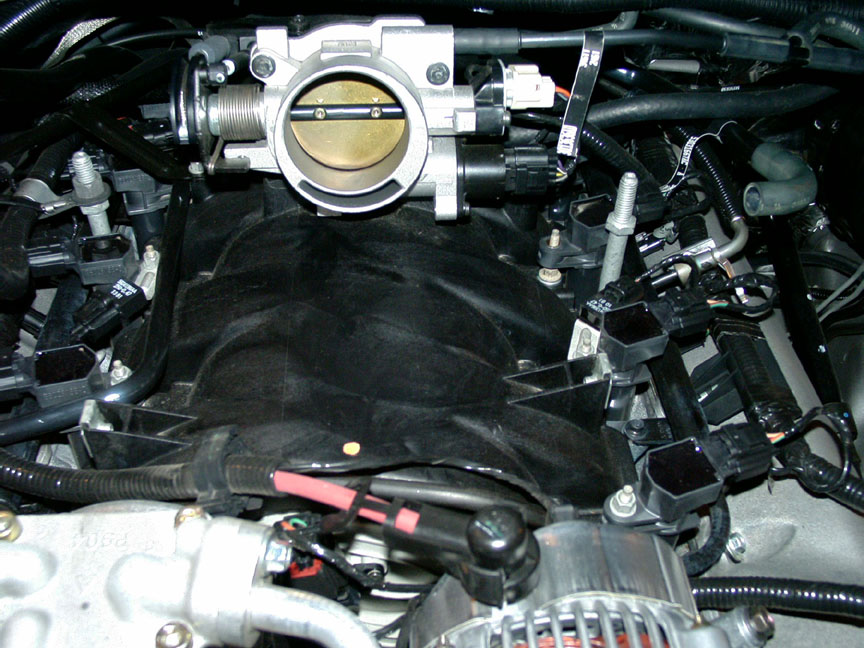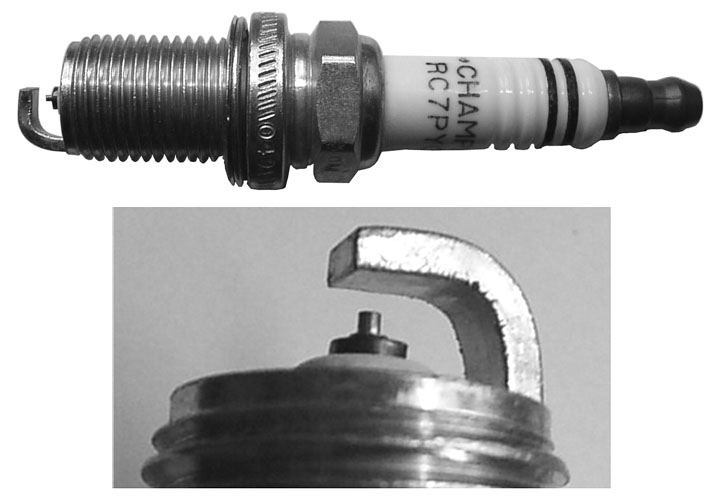Welcome to the jeepExperts.com in-depth web page of WJ Generation Jeep Grand Cherokee’s 4.7 liter HO engine. Did we mis something? Please get in contact with us and inform us about it!
The 4.7-Liter HO engine
A efficiency enhanced “HO” model of the favored 4.7-Liter V8 engine made its premier within the 2002 Grand Cherokee. The HO engine was a Grand Cherokee unique for the 2002-2004 mannequin years, out there as an possibility on Limited fashions and normal on the Overland – however not out there on the Laredo. For the 2004 mannequin yr, Jeep added the HO as an possibility on three new particular fashions, the Freedom Edition, Columbia Edition and the Rocky Mountain version.
The efficiency modifications (listed within the chart under) added 30 horsepower and 30 Ft.-Lb. of further torque. The HO engine is designed to run completely on normal octane gas, however for optimum efficiency Jeep recommends premium gas.
The HO engine was discontinued within the Grand Cherokee on the finish of the 2004 mannequin yr. The all-new 2005 mannequin Grand Cherokee’s provided the brand new 3.7 V6, the usual 4.7, the 5.7 Hemi and the brand new 6.1L Hemi SRT engines. Starting on the finish of the 2005 mannequin yr, the 4.7 HO engine turned availble within the Dodge Dakota.
Ho engine mannequin availability – Grand Cherokee |
||||||||
| Year / Model | Laredo | SE | Sport | Limited | Overland | Freedom | Columbia | Rocky Mtn |
| 2001 | N/A | Pilot fashions | ||||||
| 2002 | N/A | N/A | N/A | Optional | Standard | |||
| 2003 | N/A | Optional | Standard | |||||
| 2004 | N/A | N/A | Optional | Standard | Optional | Optional | Optional | |
| 2005 | N/A | N/A | N/A | N/A | ||||
2001 Grand Cherokee HO
What no ones realizes, and being revealed right here for the primary time, is that the HO engine was initially deliberate for the 2001 mannequin yr. Several 2001 Grand Cherokee fashions have been constructed with the 4.7 HO engines again in 2000!
Plans for a “future” HO model of the 4.7 have been put collectively when the brand new engine was authentic designed for the 1999 mannequin yr, again in 1996/1997. The first HO engines have been assembled within the fall of 1999 and put into 2001 mannequin pilot Grand Cherokee’s in early February 2000! Twelve of those fashions have been constructed, full manufacturing variations proper all the way down to the HO badges. Colors have been Stone White, Patriot Blue, Flame Red, Sienna and Champagne.
These particular 2001 HO fashions additionally included an unique “Sport suspension”, completely different than that of the Up Country bundle. Components included unique springs (ZKN/ZKT entrance and ZYN/ZYT rear), Goodyear P235/65R17 BSW AS/P tires, chrome tow hooks and the skid plate bundle. Even extra fascinating is the axle ratio, which has by no means been used on some other Grand Cherokee mannequin, 3.91 !
For causes unknown, the HO engine was held again till the 2002 mannequin yr. It’s potential that for advertising and marketing causes Jeep needed to introduce the HO with the brand new Overland mannequin, and to have a key possibility added to the checklist of latest options being carried out for 2002, the beginning of the second half of the WJ era. New options for 2002 included facet air luggage, adjustable pedals, the Rain Sense wiper system and the Tire Pressure Monitor System. The HO engine was the “icing on the cake” and turned out to be a very fashionable and profitable possibility.
Summary of HO engine function variations
|
||
| 1. Block – Detonation sensor bosses within the valley | 10. Intake – low-restriction consumption system (completely different resonator, air filter, air filter hose and housing) | |
| 2. Camshaft – customized profile lobes (designed for elevated efficiency) | 11. Knock sensors – two, stereo | |
| 3. Connecting rods – modified, with floating wrist pins (vs pressed-fit pins in normal V8) | 12. Main bearings – tri-metal (vs bi-metal in normal V8, designed particularly for the HO engine) | |
| 4. Crankshaft – solid metal (vs forged iron in normal V8) | 13. PCM calibration – distinctive programming | |
| 5. Crankshaft damper – distinctive to H.O. | 14. Pistons – dome formed for elevated compression ratio | |
| 6. Cylinder heads – completely different formed combustion chambers (for improved airflow). The letters “H.O.” are solid on the entrance finish of the heads. | 15. Spark plugs – platinum tipped | |
| 7. Exhaust tip – chrome (2002 fashions solely, decontented for 2003 fashions. Available solely as a one-piece meeting with muffler) | 16. Valves – distinctive exhaust valves (identical raise as normal V8) | |
| 8. Fuel injectors – larger movement (+3.3 lb/hr) | 17. Valve springs – upgraded valve springs (consumption & exhaust. Larger diameter wire and extra coils) | |
| 9. Intake manifold – modified (shorter runners) | ||
HO manifold and cams improve
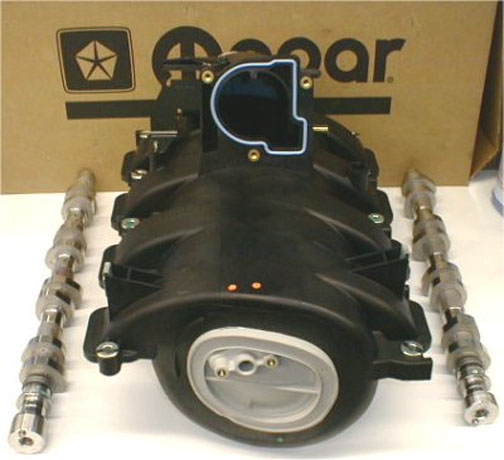
 Notes: When the HO was first launched in the summertime of 2001, Chrysler service coaching literature featured statements and warnings that the upgraded elements used on the HO engine have been NOT interchangeable with the usual 4.7L engine. So we discovered it fascinating that afterward Mopar launched a “HO” efficiency cams and manifold equipment, contemplating that these are the very same elements that the manufacturing facility used for the 2002 4.7L HO. The Mopar equipment consists of gaskets and usually takes from 4-8 hours or extra to put in. It is beneficial that BOTH the manifold and the camshafts be put in collectively if doing this improve (not only one or the opposite).Quite just a few Dodge truck homeowners have efficiently put in the manifold and cams into their normal 4.7 engines with none main issues. Most have reported horsepower good points from 5% to fifteen%, various at completely different RPM’s. Anyone eager about doing this improve or studying extra about it ought to go to the message boards at DodgeDakotas.com and search by way of the HO associated posts. Some Jeep homeowners at the moment are contemplating this improve, we’ll report on the outcomes as information turns into out there.
Notes: When the HO was first launched in the summertime of 2001, Chrysler service coaching literature featured statements and warnings that the upgraded elements used on the HO engine have been NOT interchangeable with the usual 4.7L engine. So we discovered it fascinating that afterward Mopar launched a “HO” efficiency cams and manifold equipment, contemplating that these are the very same elements that the manufacturing facility used for the 2002 4.7L HO. The Mopar equipment consists of gaskets and usually takes from 4-8 hours or extra to put in. It is beneficial that BOTH the manifold and the camshafts be put in collectively if doing this improve (not only one or the opposite).Quite just a few Dodge truck homeowners have efficiently put in the manifold and cams into their normal 4.7 engines with none main issues. Most have reported horsepower good points from 5% to fifteen%, various at completely different RPM’s. Anyone eager about doing this improve or studying extra about it ought to go to the message boards at DodgeDakotas.com and search by way of the HO associated posts. Some Jeep homeowners at the moment are contemplating this improve, we’ll report on the outcomes as information turns into out there.
The Mopar Manifold/Cams equipment is accessible from Multitronics (“Kolak”)
Manifold and Cams OEM Part numbers:
HO Camshafts:
Left (2002-2004): P/N 53021411AB
(outmoded by P/N 53021411AD. MSRP: $192.00)
Right (2002-2004): P/N 53021412AB
(outmoded by P/N 53021412AD. MSRP: $210.00)
HO Manifolds:
Note: All manifolds are presently on nationwide back-order or discontinued (as of November 2008)
2002: P/N 53031739AC
(outmoded by P/N 53031739AD. MSRP: $264.00. Used solely in HO engines for mannequin yr 2002)
2003: P/N 53013403AB
(outmoded by P/N 53013403AC, then P/N 53013403AD, then P/N 53013403AE. MSRP: $153.00. Redesign of 2002 model, utilized in each normal 4.7 and 4.7 HO engines for mannequin yr 2003)
2004: P/N 53013403AC
(outmoded by P/N 53013403AD, then P/N 53013403AE. MSRP: $153.00. Very slight non-performance adjustments from the unique 2003 model. Used in each normal 4.7 and 4.7 HO engines for mannequin yr 2004).
(NOTE: Prices listed are for reference functions solely and will fluctuate by vendor. MSRP costs are present as of September 2010. Parts aren’t out there from this site. Some elements could also be discontinued.)


HO low restriction consumption system
HO consumption system parts HO manifold and throttle physique
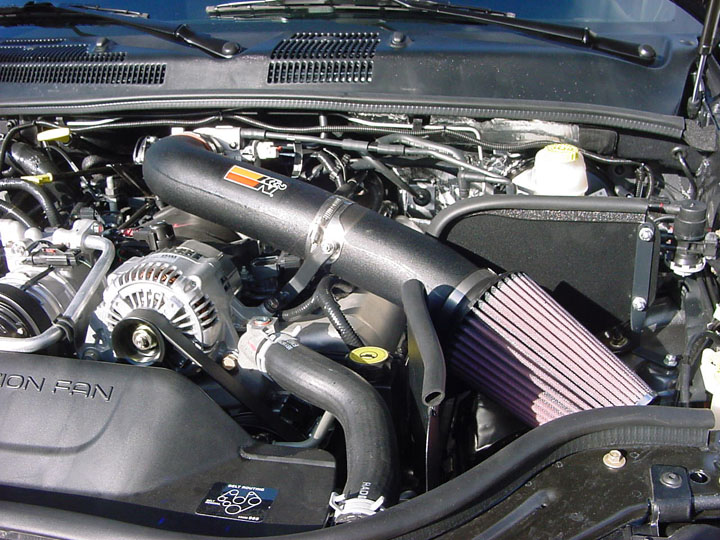

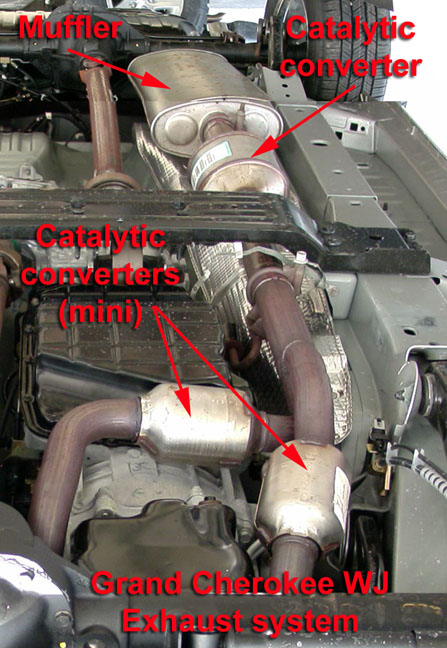

4.7 HO Specifications
|
Dome formed HO piston and RC7PYCB4 platinum-tipped spark plug
|
General:
Camshaft: Custom profile lobes (designed for elevated efficiency)
Compression Ratio: 9:7.1
Crankshaft: Forged metal, with customized damper
Cylinder Block: Cast-iron block with modified aluminum alloy heads. Detonation sensor bosses within the valley
Cylinder heads: Different formed combustion chambers (for improved airflow)
Displacement: 4.7 Liters / 287 C.I.
Engine kind: 90° SOHC V-8 16-Valve
Engine Power (SAE internet): 265-270 BHP @ 5100 RPM
Engine Torque (SAE internet): 325-330 LB-FT @ 3600 RPM
Engine Bore x stroke: 93.0 mm (3.66 in.) / 86.5mm (3.40 in.)
Firing Order: 1-8-4-3-6-5-7-2
Injectors: Flow = 25.8 lb/hr @ 49psi
Knock sensors: Two (Stereo)
Lead Cylinder: # 1 Left Bank
Main bearings: Tri-metal development
Manifold, Intake: Modified (shorter runners)
Oil Capacity: 6 Quarts, 10W30 beneficial
Oil strain: At curb idle: 04 psi min. @3000 rpm, 25-110 psi
RPM Engine pace, most: 6000 RPM
RPM Engine pace, tachometer redline: 5700 RPM
Spark plugs: Unique platinum-tipped spark plugs. Type SPRC7PYCB4, .040 in. hole
Throttle physique dimension: 68mm (identical as 2002-2004 normal 4.7 engine)
Pistons:
Piston diameter: 92.975 mm (3.6606 in.)
Piston materials: Aluminum Alloy, Symmetric pop-up design (for improved compression)
Piston weight: 383.5 grams (13.52 oz.)
Piston pins, kind: Full floating
Piston pins, clearance: 0.010 – 0.019 mm (0.0004 – 0.0008 in.)
Piston pins, diameter: 24.017 – 24.020 mm (0.9455 – 0.09456 in.)
Valves:
Valve system: Chain-driven SOHC, 16 valves, hydraulic end-pivot curler rockers. Unique exhaust valves
Valve springs (consumption and exhaust): 7.30 coils, 4.77 wire diameter
Intake – Opens (ATDC): 3.0°
Intake – Closes (ATDC): 233.0°
Intake – Duration: 236.0°
Exhaust – Opens (BTDC): 235.0°
Exhaust – Closes (ATDC): 15.0°
Exhaust – Duration: 250.0°
Valve Overlap: 18.0°
Valve raise, Intake (at 0 lash): 12.0 mm (0.4724 in.)
Valve raise, Exhaust (at 0 lash): 10.90 mm (0.4292 in.)
Valve raise (zero lash): Intake 12.0 mm (0.4724 in.), Exhaust 10.90 mm (0.4292 in.)
Speed:
0-60 mph: 6.9 (Motor Trend)
0-62 mph: (0-100 km/h): 8.3 (DCX)
1/4 mile / pace: 15.4 / 86.6 mph (Motor Trend)
Top pace (w/ limiter): 118 mph
Top pace (w/o limiter): 128 mph (DCX)
Fuel:
Fuel Economy mpg (EPA est., City/Hwy): 14/19
Fuel requirement: Regular unleaded, 87 octane. For most efficiency, Unleaded premium, 93 octane.


